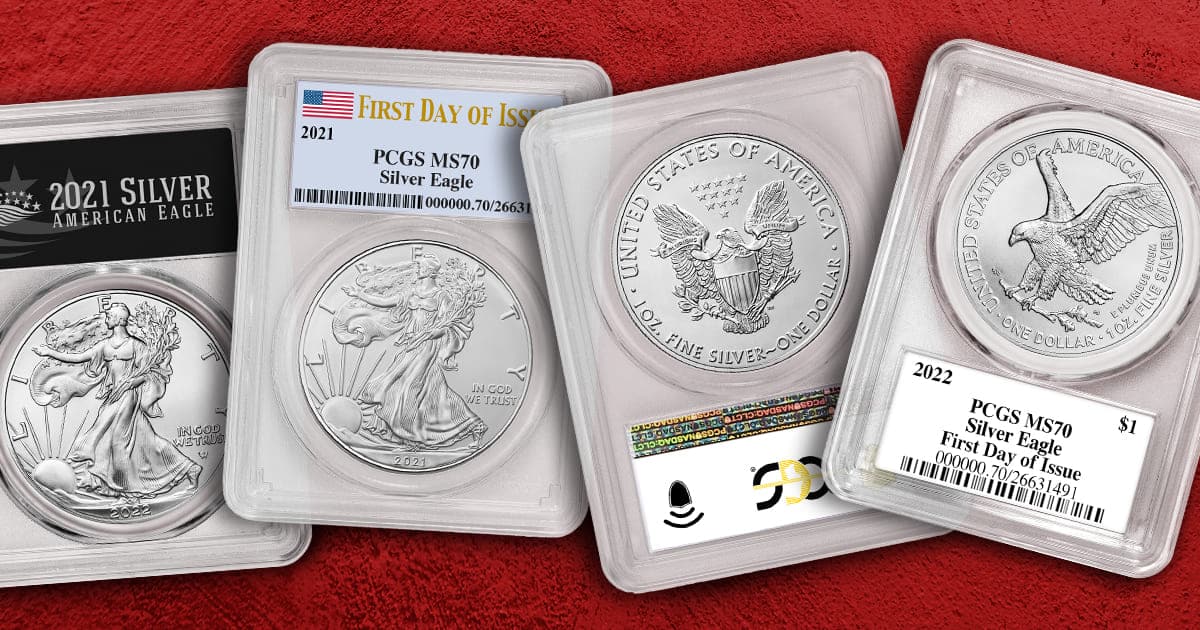
The Difference Between Type 1 and Type 2 Silver American Eagles
American Silver Eagles are in-demand; they’re the official Silver bullion coin of the United States, are highly liquid, and provide value, as well as collectability. The Silver Eagle is composed of .999 Fine Silver and is in such high demand that, in recent years, the U.S. Mint has had to delay the release or ration sales.
Type 1 American Silver Eagles
The Silver Eagle has been struck since 1986, based on the 1916 Walking Liberty Half Dollar, designed by Adolph A. Weinman.
The Type I obverse features Liberty walking among sun rays, wearing an American Flag. In Liberty’s left arm, she carries laurel and oak branches. The word LIBERTY is transcribed above her head with the words IN GOD WE TRUST guiding her steps and the year of issue below her feet.
The reverse, designed by John Mercanti, features a heraldic eagle with a banner in its mouth behind a shield with arrows in its left talon and an olive branch in its right talon. The banner reads E PLURIBUS UNUM.
Type 2 American Silver Eagles
In 2021, the U.S. Mint introduced a new American Silver Eagle design for the first time since 1986. The Weinman obverse was not changed, but the reverse was updated with a design by Emily Damstra.
Damstra’s 2021 reverse design pays homage to the 1971 Eisenhower Dollar, with an eagle landing on a branch. Around the eagle are the words UNITED STATES OF AMERICA, 1 OZ. FINE SILVER, ONE DOLLAR, E PLURIBUS UNUM, and the initials of the designer, as well as the U.S. Mint Medallic artist, Michael Gaudioso.
Add a Type 1 and Type 2 American Silver Eagle to your collection today and appreciate both stately designs!





